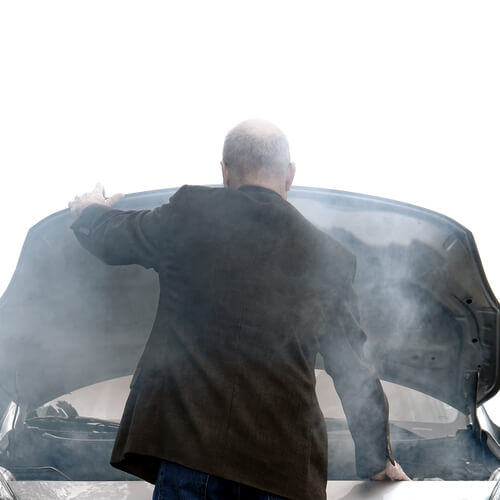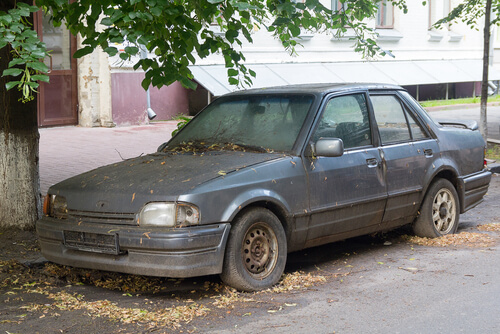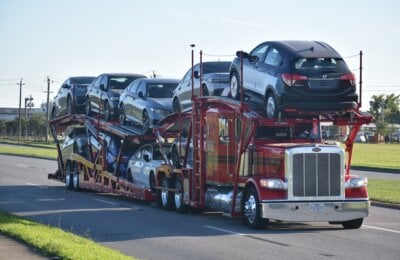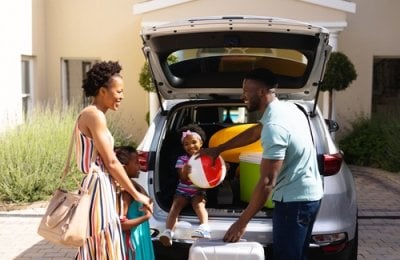
Reading Time: 4 minutes
Shipping a non-running vehicle is a common request we receive from potential clients, often wondering, ‘Can I ship a non-running vehicle?’ The answer is a resounding yes! However, there are certain prerequisites for shipping a non-running vehicle. In this post, we’ll explore these specifics in detail.
As auto transportation brokers, we at Nationwide Auto Transportation act as an intermediary between you – the client – and the carriers who actually transport your car. Our role is pivotal, as we handle the important communications between clients who want quick and reliable answers, and truckers who are out on the roads, driving their rigs. These hard-working individuals are often self-employed, owner-operators who are on the road up to fourteen hours a day. They don’t have time for marketing, administration, and customer service, and are grateful to us brokers who take care of that important function on their behalf. And this is where the challenge with shipping a non-running vehicle comes in.
How do You Ship a Non Runner?

While many of these truckers have semi-trucks, the configurations of their carriers differ greatly. Some are able to transport non-running vehicles, but others are not. Some have the proper man-power and lifting equipment, and others don’t. That’s why we ask our clients to be honest with us upfront in order to avoid delays, mishaps, and additional fees that come with unexpectedly having to ship an inoperable car, whether you’re shipping it to a new buyer, or to a service center.
What’s a non-running vehicle, exactly?
It’s a car that can’t be driven, often due to various issues. When you book auto transportation, you need to specify your car’s condition. Different problems can change the loading and unloading process, affecting the shipping cost. For example, a car with collision damage but still drivable is ‘operable’ and typically doesn’t impact the price. Remember, many factors can influence a vehicle’s safe operability. Other forms of operability include:
- Doesn’t start, but steers. This is often the case with classic cars that are being transported to specialist service facilities. If you want to restore your car to its former glory, but it doesn’t start, we can transport it for you. Please do let us know upfront that it doesn’t start, but it steers. That means that we can use a winch to pull the car onto the carrier.
- Doesn’t start, doesn’t steer. If your vintage or modern car does not work at all – whether or not it has an engine – it will have to be lifted onto the truck using specialized equipment.
- Can’t start, no key.
- Can start, but has flat tires.
- Can start, has tires but no brakes.
An inoperable car with a dead battery may be costly. If the car does not start, it may need to be lifted onto the transport truck. Carriers may have jumper cables but if not, the vehicle will be deemed inoperable and the price will go up. Rescheduling collection might be necessary if the carrier lacks the necessary equipment.
Reduce the Cost of Shipping a non-running Vehicle
There are some ways to reduce the cost of a non-operable car. Just as preparing your car for shipping can help you avoid paying unnecessary fees and opening yourself up to theft and other issues, there are things you can do to reduce the cost of shipping an inoperable car:
- No key? If you don’t have a key to start your otherwise operable car, try to order a copy before requesting car shipping quotes.
- Flat tires? You will need new tires if you plan on ever driving the car again, so consider buying a set before you ship your car.
- Dead battery? You can find a new car battery from as little as $50 and it should be good for a few years.
Fixing any issues that bring your vehicle closer to running condition will make the process faster and cheaper. Keep in mind not all carriers have the necessary equipment to handle inoperable cars.
Door-to-door auto transport may not be an option if your car needs more space for loading and unloading. In these cases, terminal to terminal transport is usually preferred by our carriers. Special arrangements need to be made if the non-operating car is at your home.

Shipping an Inoperable Car With Nationwide Auto Transportation
Some people think that if they admit that the vehicle has issues, doesn’t roll or if it’s a track car, that the auto shipping company will have reason to raise the price of shipping an inoperable car. We hope that this post clarified the real reasons why we need to know the truth.
The reason why we need to know that your vehicle doesn’t start, steer or run, is so that we can find the correct driver for your specific requirements and the safety involved in shipping a non-operable car. Since non-running cars cannot be driven onto the shipping truck, the carrier must use other methods to load the car. As such, you can sometimes choose between the two main car shipping options, namely open transport and enclosed auto transport.
Open auto transport carriers will use a winch to pull the car onto the truck. The chain will either be hand-cranked or manual. Enclosed auto transport usually makes use of a lift gate to load the car into the truck.
Not sure how to go about shipping a non-running vehicle? Get in touch with the friendly, helpful representatives at Nationwide Auto Transportation now.



